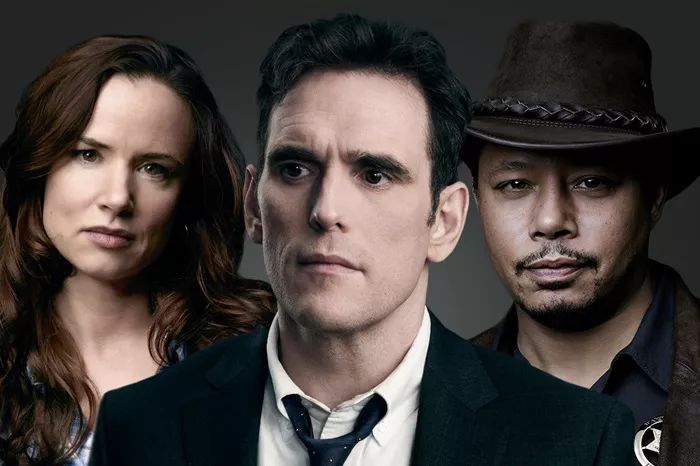In the vast realm of streaming platforms, Netflix continues to captivate audiences with a diverse array of content. One notable addition to its repertoire is the documentary film, “Show Me the Father.” Released recently, this thought-provoking documentary delves into the intricate facets of fatherhood, providing viewers with an intimate look at the dynamics that shape paternal relationships. Let’s embark on a comprehensive journey through the lens of “Show Me the Father on Netflix.”
Unveiling the Cinematic Canvas: “Show Me the Father” Overview
“Show Me the Father” emerges as a cinematic exploration into the multifaceted dimensions of fatherhood. Directed by the Kendrick Brothers, known for their impactful faith-based films, the documentary weaves together narratives, interviews, and real-life stories to paint a vivid portrait of the father-child dynamic. As audiences navigate through the film, they are confronted with questions that resonate universally: What defines a father? How do paternal figures impact individuals and society as a whole?
Navigating the Fatherhood Spectrum: A Panoramic View
The documentary skillfully navigates the spectrum of fatherhood, portraying a myriad of experiences that encompass joy, pain, redemption, and transformation. From heartwarming tales of exemplary fathers to poignant stories of absence and estrangement, “Show Me the Father” casts a wide net. By doing so, the film transcends the limitations of a single narrative, ensuring that viewers from all walks of life can find relatability in its portrayal of the complexities inherent in father-child relationships.
The Human Touch: Real-Life Stories and Emotional Resonance
At the heart of “Show Me the Father on Netflix” lies its ability to connect with audiences on a deeply emotional level. The filmmakers employ a powerful storytelling approach, weaving in real-life accounts that resonate with authenticity. Viewers are invited to witness the highs and lows of fatherhood, creating an empathetic connection that transcends the screen. Through personal anecdotes and testimonials, the documentary reinforces the notion that the human experience of fatherhood is both universal and deeply personal.
See Also: Is Diagnosis Murder on Netflix?
Behind the Scenes: The Making of “Show Me the Father”
Understanding the creative process behind “Show Me the Father” enhances the appreciation for its impact. The Kendrick Brothers, acclaimed for their commitment to faith-based storytelling, bring their signature touch to this documentary. Through meticulous research, interviews with experts, and a dedication to presenting diverse perspectives, the filmmakers construct a compelling narrative that goes beyond surface-level discussions. The result is a thought-provoking piece that encourages introspection and contemplation on the part of the viewer.
Faith and Fatherhood: Intersecting Themes
An underlying theme that permeates “Show Me the Father” is the intersection of faith and fatherhood. The documentary explores how religious beliefs and values influence the role of fathers in various communities. By shedding light on the spiritual dimensions of fatherhood, the film invites viewers to ponder the broader societal impact of shared beliefs on familial structures. This nuanced approach adds depth to the documentary, sparking conversations about the intricate relationship between faith and parenting.
Critical Acclaim and Audience Reception
Since its release on Netflix, “Show Me the Father” has garnered attention from both critics and audiences. The documentary’s ability to provoke thoughtful discussions on a universal theme has been widely praised. Its nuanced portrayal of fatherhood, coupled with the emotional resonance of real-life stories, has resonated with viewers across diverse demographics. As the film continues to find its place in the cultural zeitgeist, it stands as a testament to the power of storytelling in fostering understanding and empathy.
Navigating Controversies: Addressing Criticisms and Challenges
While “Show Me the Father on Netflix” has received acclaim, it has not been immune to criticism. Some critics argue that the documentary leans heavily towards a particular ideological perspective, potentially limiting its appeal to a broader audience. Addressing such concerns is crucial in fostering a balanced discourse around the film, acknowledging that discussions on fatherhood should be as diverse as the experiences they seek to portray.
Impact Beyond the Screen: The Call to Reflection and Action
“Show Me the Father” transcends its role as a mere cinematic experience; it serves as a call to reflection and action. By presenting narratives that mirror the complexities of real-life fatherhood, the documentary encourages viewers to examine their own beliefs, biases, and experiences. It challenges societal norms and perceptions, sparking conversations about the roles fathers play in shaping the future and the collective responsibility of communities to support and uplift paternal figures.
Conclusion: A Cinematic Tapestry of Fatherhood
In conclusion, “Show Me the Father on Netflix” emerges as a poignant and reflective exploration of fatherhood, seamlessly weaving together narratives that span the emotional spectrum. The documentary’s ability to transcend the confines of traditional storytelling elevates it to a status beyond mere entertainment. As viewers engage with the film, they are invited to confront their own beliefs, biases, and experiences, fostering a deeper understanding of the profound impact fathers have on individuals and society as a whole. “Show Me the Father” stands as a testament to the power of storytelling to elicit empathy, challenge societal norms, and inspire meaningful conversations about the essence of fatherhood.


























